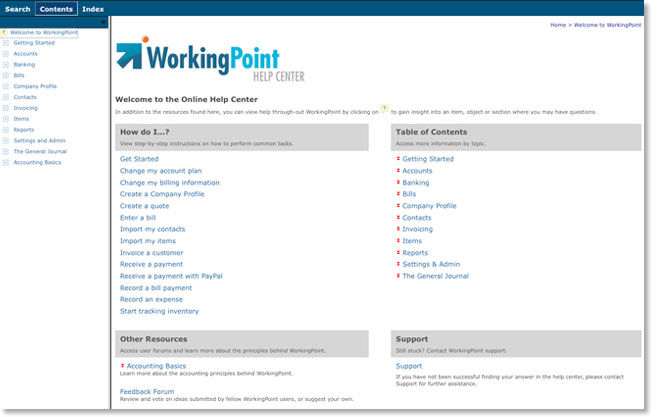 Over the past year, the Enterprise 2.0 space has started seeing some momentum that its evangelists have been waiting years to experience. And it’s for one basic, underlying reason: Enterprise 2.0 is about collaboration, and collaboration is a profoundly difficult and expensive business problem, particularly in a down economy. Technology and society have started catching up, so world of corporate collaboration saw a big jump this year.
Over the past year, the Enterprise 2.0 space has started seeing some momentum that its evangelists have been waiting years to experience. And it’s for one basic, underlying reason: Enterprise 2.0 is about collaboration, and collaboration is a profoundly difficult and expensive business problem, particularly in a down economy. Technology and society have started catching up, so world of corporate collaboration saw a big jump this year.
But what about small teams and organizations? What collaboration challenges do they face? (In reality, since person-to-person communication has limited scalability, small businesses or small teams in larger businesses often face precisely the same challenges.)
What Is So Hard About It?
Collaboration is at the heart of knowledge workers lives: everyone has a different specialty, and in order to accomplish a project’s objectives, several people must each bring what they are good at, and work together to deliver an end result that is superior to what any one individual is capable of doing alone.
As inherently social creatures, it would seem that collaboration should be far easier for people than it often is. But, as FreelanceSwitch notes in their recent article on collaboration failures, the single biggest obstacle to collaboration is almost always communication. Whether the problem is schedules, geography, technology, language or ego, how well a team communicates is directly related to how well a team collaborates.
According to the Project Management Institute, 90% of project management is about communication (which is usually the biggest reason it’s a bad idea to have your technical lead function as a project manager on most large or complex projects: you need them spending their time building technology, not communicating with stakeholders). As a result, I’ve had to learn a lot over the years about how to make the flow of communication work during collaborative engagements. After a decade of doing this, I now live by five rules when it comes to getting work done with teams:
1. Ask for preferences
I hate the telephone. Really. I can’t stand it. I almost never answer it unless I know who is calling and why, so when it comes to work, I will typically schedule phone calls. However, I am lightening fast on both email and text messages. But not everyone is the same. How do you know until you ask? (And, for those like me: check out Google Voice. They convert voicemail to text and sent it to you via email. It’s almost as good as not having to deal with the phone at all.)
I recently started collaborating with a an entrepreneur who is much more of a traditional telephone guy, and he was constantly asking me to get on the phone and call our client to ask questions or get information. At first, I made the mistake of assuming that he knew they prefered to communicate by phone. After about a week I recognized a familiar pattern (because it’s what I do also): I’d leave a voicemail, and then I’d get an email in response, often with the answer to my question.
The next time I was on the phone with the client (during a scheduled call), I asked her what her prefered method of communication was. As I expected, her answer was: Email.
Lesson: Never assume that second-hand information is accurate (or applicable in your case). Check with the source.
2. Define groundrules — and get agreement
In the world of project management, large projects will often create a Communications Plan. This lays out the groundrules for the communications process everyone is expected to follow. The problem that I’ve most commonly encountered with these, however, is that the document is frequently created in a vacuum and reflects what the project manager wants, instead of what is native to the team.
Some things that I’ve commonly encountered in enterprise environments:
- Weekly team meetings will be in person only. No dial-in.
- All status reports & meeting materials will be posted on the intranet.
- No laptops or smartphones allowed in meetings.
- Presentation decks must be limited to 10 slides or less.
- Any meeting without a distributed agenda 60 minutes prior to start time will be canceled.
- Meeting facilitator will designate a note taker at the beginning of each meeting.
In more laid back environments, some of the ground rules I’ve experienced are:
- All notes and agendas are posted on team wiki.
- Anyone more than five minutes late to a meeting pays a dollar.
- Only one person speaks at a time; violators are fined a dollar.
- Food allowed in meetings only when you bring enough to share.
- No meetings during lunchtime unless food is provided.
And these are just the things that are focused on actual meetings. There are plenty of other groundrules to get in place: do you use video conferencing? What Instant Messanger client does everyone use? Is email the preference? And what about the ever-annoying and always-growing “Reply All” habit in email? At what point do email conversations escalate to a conference call or an in-face meeting? Is trouble-shooting a technical problem with the team a priority that warrants an emergency meeting, or should it wait?
Many of these things start off as assumptions — some people like Skype, while others like GTalk. Some people want a voicemail, while others prefer an email. Some people avoid formal documentation, while others consider anything less unacceptable.
Teams that don’t define what their standards and expectations are, will inevitabley run into a problem. The best way to avoid it is to define what the principle methods are going to be, make sure that meets everyone’s needs, and then revisit the question as challenges or concerns come up. Keep it fluid, and evolve it as necessary, but never, ever, ever assume that everyone is starting off on the same page.
Lesson: Communication is a two-way street. One person’s preference cannot dominate. Unless the team defines what is expected, each individual will do what makes sense for them. Remember, there is no ‘i’ in ‘team.’
3. Don’t get tech crazy
In my tech-centric universe, this one is always hard to battle because geeks tend to like gadgets. So if you find that your communication groundrules are getting bogged down in religious battles (Mac vs. PC!) between evangelists of different solutions, then stop and ask the question: do we need synchonous (phone, instant messanger, meetings, etc.) communication, or will asynchronous suffice (email, blogging, etc.)?
Don’t let the conversation be about technology until you are crystal clear about whether a discussion needs to happen in real time, or if it can occur at a more leisurely pace. One of the biggest time wasters any project can experience is endless emails that go on for days, instead of someone just putting a stake in the ground and getting everyone on the phone at once. Often times a week’s worth of email can get resolved in 30 minutes worth of phone call.
Lesson: Communication comes in different flavors. Pick the right one for the right job.
4. Pay attention to communication styles
This is especially important for managers and project leaders — and it’s often particularly difficult for us extroverted types to keep in mind — but some people are just shy and have trouble speaking up. This problem can also be complicated by cultural factors, where people are raised in societies where being direct is considered rude or where the “boss” is considered an authority not to be contradicted.
Collaborative team environments only work when everyone participates. But it’s vital for the leaders on the team to recognize that quiet people are not always quiet because they don’t have anything to say. Sometimes they just need to be solicited directly for their feedback.
Lesson: If someone is staying quiet, meet with them privately to try to understand why. Don’t assume everyone is going to speak up in a crowded meeting.
5. Bad news doesn’t get better with age
This is the mother of all lessons for projects. No one likes being the bearer of bad news. No one likes disappointing people, and no one likes to be considered the Grim Reaper, out to kill someone’s hopes and dreams. But the fact is, bad news isn’t going to go away. And you always stand a much better chance of finding a solution to work your way through it by addressing it early than if you wait.
Consider this: waiting until the last minute to give bad news says two really negative things about you, either you didn’t know until now, or you are not showing the recipeint of the news the respect of treating them like an adult. Of course, not everyone is going to take it well. But that’s not the point.
Lesson: Don’t ambush people. Bad news is easier to digest when you have some time to do it. It’s empowering to know as early as possible. The longer you wait to share it, the more options you eliminate.
No doubt about it. Collaboration is hard work. FreelanceSwitch covers a few other great reasons that collaboration commonly fails, not the least of which is ego (one of the most difficult challenges to handle), and is worth a read.
In the meantime, though, remember: people communicate all the time. Often times, we don’t even realize we’re doing it. So pay attention to what is native to your team members, and build your formal communication structure around what your team is already doing naturally. But more than anything else, once you figure out how you want to manage communications, make sure everyone agrees and then make sure you continue to evolve as your team, your projects and technology continues to change.
Alora Chistiakoff is an entrepreneur, blogger, content strategist and project manager who has been developing online business and technology for startups for more than a decade. She co-owns The Indigo Heron Group, Inc., a content strategy firm in Austin, Texas.

 Over the past year, the Enterprise 2.0 space has
Over the past year, the Enterprise 2.0 space has 

 Of course, whether or not Step 4 buys back enough time keep the project on target varies from project to project, but the part that interests me is the first half of Step 4. When I was first starting out in my career, I would typically find myself surprised when it would seem to happen at the darkest hour of a project. Over time, I came to expect that it would (and I still often get frustrated if it doesn’t).
Of course, whether or not Step 4 buys back enough time keep the project on target varies from project to project, but the part that interests me is the first half of Step 4. When I was first starting out in my career, I would typically find myself surprised when it would seem to happen at the darkest hour of a project. Over time, I came to expect that it would (and I still often get frustrated if it doesn’t).

 Today Gartner released findings for a new 2010 technology survey (see here for
Today Gartner released findings for a new 2010 technology survey (see here for  Of all the words people frequently use to describe me, “optimist” rarely makes the cut. And while I would argue that the reverse is definitely not true, the term I have self-applied over the years is actually “pragmatist” (even in the name of
Of all the words people frequently use to describe me, “optimist” rarely makes the cut. And while I would argue that the reverse is definitely not true, the term I have self-applied over the years is actually “pragmatist” (even in the name of  One of
One of